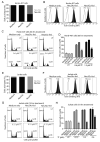Host adaptation of a bacterial toxin from the human pathogen Salmonella Typhi
- PMID: 25480294
- PMCID: PMC4258231
- DOI: 10.1016/j.cell.2014.10.057
Host adaptation of a bacterial toxin from the human pathogen Salmonella Typhi
Abstract
Salmonella Typhi is an exclusive human pathogen that causes typhoid fever. Typhoid toxin is a S. Typhi virulence factor that can reproduce most of the typhoid fever symptoms in experimental animals. Toxicity depends on toxin binding to terminally sialylated glycans on surface glycoproteins. Human glycans are unusual because of the lack of CMAH, which in other mammals converts N-acetylneuraminic acid (Neu5Ac) to N-glycolylneuraminic acid (Neu5Gc). Here, we report that typhoid toxin binds to and is toxic toward cells expressing glycans terminated in Neu5Ac (expressed by humans) over glycans terminated in Neu5Gc (expressed by other mammals). Mice constitutively expressing CMAH thus displaying Neu5Gc in all tissues are resistant to typhoid toxin. The atomic structure of typhoid toxin bound to Neu5Ac reveals the structural bases for its binding specificity. These findings provide insight into the molecular bases for Salmonella Typhi's host specificity and may help the development of therapies for typhoid fever.
Copyright © 2014 Elsevier Inc. All rights reserved.
Figures






References
Publication types
MeSH terms
Substances
Grants and funding
LinkOut - more resources
Full Text Sources
Other Literature Sources
Molecular Biology Databases

